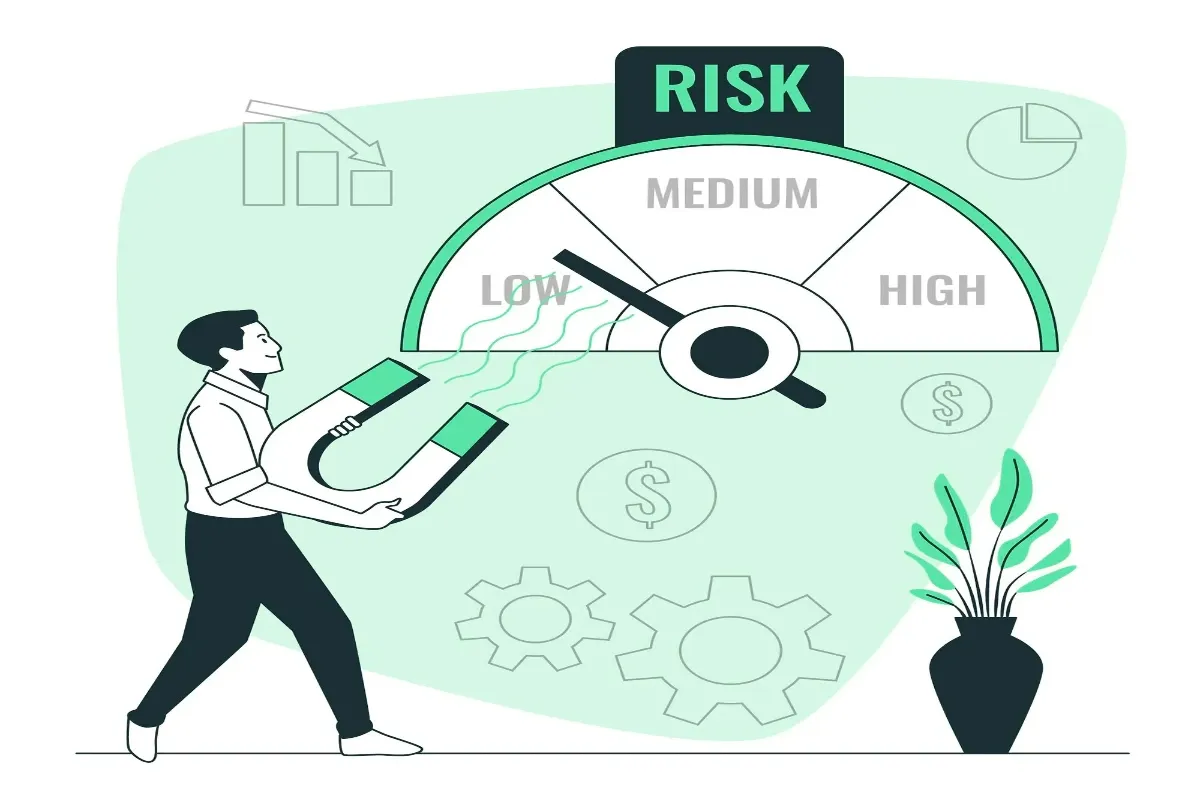
Risk-Reward Ratio in Trading: The Secret to Long-Term Success
🟦 Introduction: Why Most Traders Fail Without Understanding Risk-Reward
Ask any successful trader what matters most, and they’ll say: "Protecting capital."
The Risk-Reward Ratio (R:R) is one of the simplest yet most powerful concepts in trading. It helps you measure how much you’re risking to make a certain profit — and keeps emotions out of the equation.
🟪 “Amateurs focus on how much they can make. Professionals focus on how much they could lose.”
🔷 1. What is the Risk-Reward Ratio?
It compares the potential loss (risk) of a trade to the potential gain (reward).
📌 Formula:
Risk-Reward Ratio = Potential Loss / Potential Gain
🧮 Example:
Buy at ₹100
Stop Loss at ₹95
Target at ₹115
Risk = ₹5, Reward = ₹15
R:R = 5:15 or 1:3
🔷 2. Why R:R Matters More Than Accuracy
Most beginners believe that they need to be right in 80–90% of their trades to be profitable — but that’s a myth.
In reality, you can be wrong more often than you're right and still make money — if your Risk-Reward Ratio is favourable.
You don’t need to be right 80% of the time. Even a 40% win rate can be profitable if your R:R is strong.
📉 Example with 1:3 R:R (Risk ₹5 to make ₹15):
📊 Total Trades: 10
✅ 4 winning trades × ₹15 = ₹60 profit
❌ 6 losing trades × ₹5 = ₹30 loss
🎯 Net Profit = ₹60 – ₹30 = ₹30
Even with just a 40% win rate, you end up with a solid profit — all because of a 1:3 Risk-Reward setup.
👉 That’s how you win by losing more than winning!
🔷 3. What’s a Good Risk-Reward Ratio?
The ideal Risk-Reward Ratio (R:R) can vary based on your trading style. Your approach to the market — whether fast-paced or long-term — directly affects your risk-reward
💼 Trading Style | 🎯 Minimum R:R Target |
|---|---|
⚡ Scalping | 1:1 to 1:1.5 |
📅 Intraday Trading | 1:2 or more |
📈 Swing/Positional | 1:3 to 1:5 or higher |
💡 Higher R:R = fewer trades, more patience.
The higher your target reward compared to the risk:
The less frequently you'll find ideal setups.
But the better quality your trades will be.
You reduce overtrading and increase discipline.
⏳ Patience and precision are key when aiming for high R:R trades — especially in swing or positional strategies
🔷 4. How to Calculate R:R Before Placing a Trade
Understanding and calculating the Risk-Reward Ratio (R:R) before entering a trade helps ensure that every setup is worth the potential risk. Follow these steps:
🟢 Identify Entry Point
Wait patiently for a strong setup — don’t rush into a trade. Enter when technical indicators and price action align with your strategy.
🛑 Set a Logical Stop-Loss
Place your stop-loss just below support (for long trades) or above resistance (for short trades).
❌ Too tight? It will hit unnecessarily.
❌ Too wide? Your potential loss increases.
Keep it balanced and technically justified.
🎯 Define Your Target
Decide your realistic profit target based on the chart structure — like next resistance or previous swing high/low. Avoid setting random targets.
🧮 Use the Formula
Risk-Reward Ratio = Potential Loss / Potential Gain
Calculate this before entering the trade to see if it meets your required R:R level.
✅ Only Take Trades With a Minimum R:R
Stick to your predefined ratio, like 1:2 or better. This ensures even a few wins can cover multiple losses — leading to long-term profitability.
🔷 5. Mistakes Traders Make With R:R
Many traders understand the Risk-Reward Ratio conceptually but make common mistakes when applying it in live markets. Avoid these pitfalls:
🔻 Setting Stop-Loss Too Close = Unnecessary Exits
A stop-loss placed too tight can get hit due to normal price fluctuations — even if your trade direction was correct. Give your setup enough breathing room based on support/resistance or volatility.
🔻 Forcing R:R Into a Setup That Doesn’t Justify It
Not every trade offers a favourable R:R. If the setup naturally gives 1:1 and you try to stretch the target to make it 1:2 — it becomes unrealistic. Don’t manipulate the trade to fit the ratio; the ratio should come from the market structure.
🔻 Not Adjusting Position Size According to Risk
If you're risking ₹500 on one trade and ₹2,000 on another without adjusting your position size, your results will be inconsistent. Always size your position so that your maximum loss stays within your risk tolerance, e.g., 1–2% of capital.
🔷 6. R:R in Combination with Win Rate
The Risk-Reward Ratio (R:R) doesn't work in isolation — it's most powerful when paired with your win rate.
A strong R:R means you don’t need to win every trade to be profitable.
📈 Use this table to know your break-even point:
⚖️ Risk : Reward | ✅ Required Win Rate |
|---|---|
1:1 | 50% |
1:2 | 33.3% |
1:3 | 25% |
1:4 | 20% |
💡 Even With Low Win Rates, You Can Still Make Money
A trader winning just 1 out of 4 trades (25%) with a 1:3 R:R will still break even. Anything above that is pure profit.
So instead of focusing only on being right, focus on taking high-quality trades with solid R:R setups.
🟩 Conclusion: Focus on the Long Game
Risk-Reward isn’t just a number — it’s a mindset.
Once you adopt R:R discipline, you’ll:
Take only high-quality trades
Avoid emotional decisions
Survive and thrive in the markets
🎯 “You can lose money on more than half your trades and still make a fortune — if you manage risk.”
Happy Trading!
